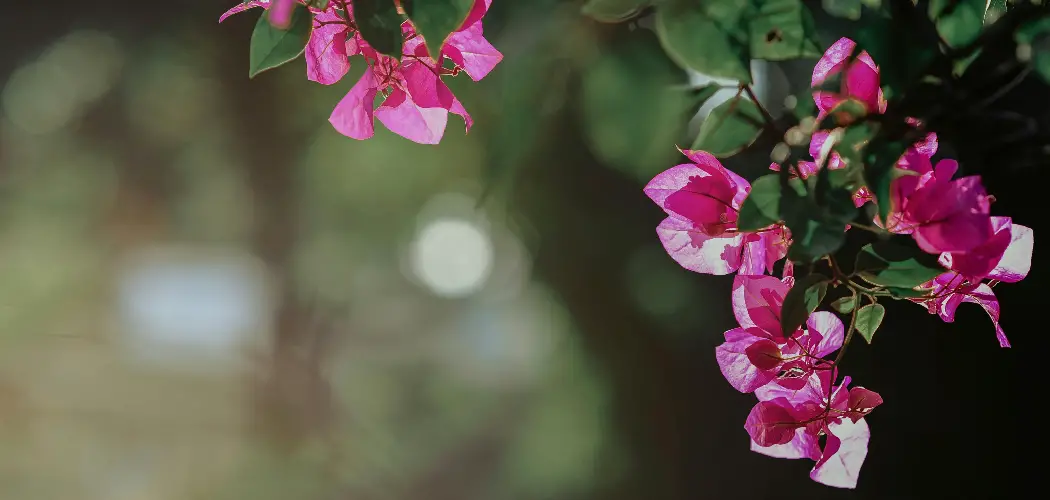raining bougainvillea is essential for achieving optimal growth and enhancing its aesthetic appeal. Properly trained bougainvillea can transform a garden space, bringing vibrant color and lush foliage to walls, trellises, and arbors. By learning how to train bougainvillea, gardeners can enjoy several benefits, including enhanced flowering, controlled growth, and improved plant health.
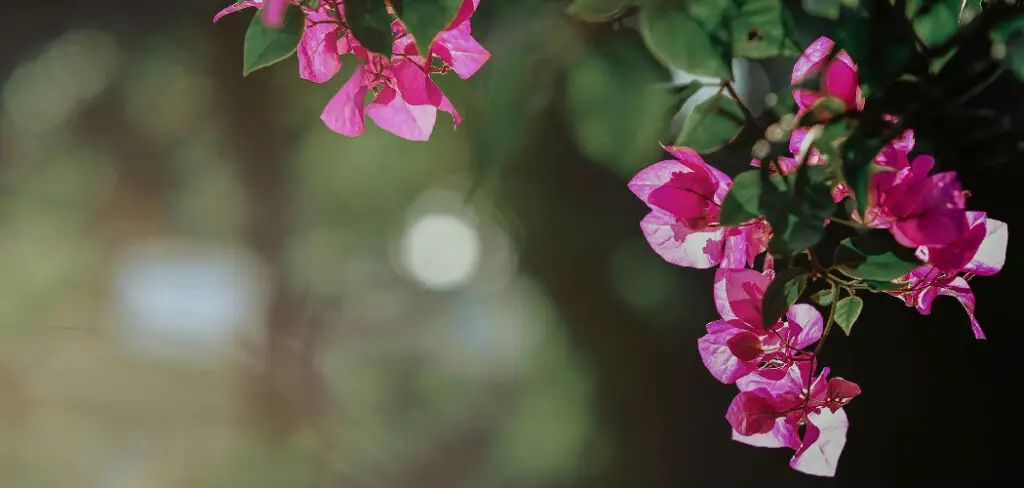
The plant’s natural climbing habit can be beautifully showcased when correctly guided, leading to a more visually pleasing and manageable display. Key training techniques include tying and securing the plant to supports, regular pruning to shape and structure, and meticulous care routines to maintain its vigor and appearance. Understanding and implementing these methods ensures that bougainvillea thrives and remains attractive in any garden setting.
Understanding Bougainvillea Growth Habits
Growth Characteristics
Bougainvillea is renowned for its vigorous and climbing nature, which allows it to cover trellises, walls, and fences with vibrant bracts and lush foliage. This plant thrives under the right conditions, rapidly extending its stems and branches to create lush, colorful displays.
The key parts of bougainvillea to focus on for training include the main stems, which serve as the plant’s primary support structure, and the branches, which can be directed and secured to guide growth. Additionally, the bracts—often mistaken for flowers—are the brightly colored parts that add beauty and appeal.
Choosing the Right Variety
Selecting the right bougainvillea variety ensures it thrives in your specific climate and fits the desired growth form, whether bush, tree, or vine. For example, varieties like ‘Barbara Karst’ and ‘San Diego Red’ are popular for creating vibrant climbing displays, while ‘Helen Johnson’ is suitable for compact growth as a bush. ‘Tree Bougainvillea’ varieties are ideal for cultivating a standalone tree-like appearance.
Each variety has unique characteristics, such as bract color and growth habit, allowing gardeners to choose the best fit for their landscape and climate conditions.
Choosing the Right Support Structure
Types of Supports
Selecting the appropriate support structure is crucial for training Bougainvillea successfully. Common support structures include trellises, arbors, walls, and pergolas, each offering unique benefits and considerations. Trellises are versatile and ideal for small gardens, providing vertical space for bougainvillea to climb.
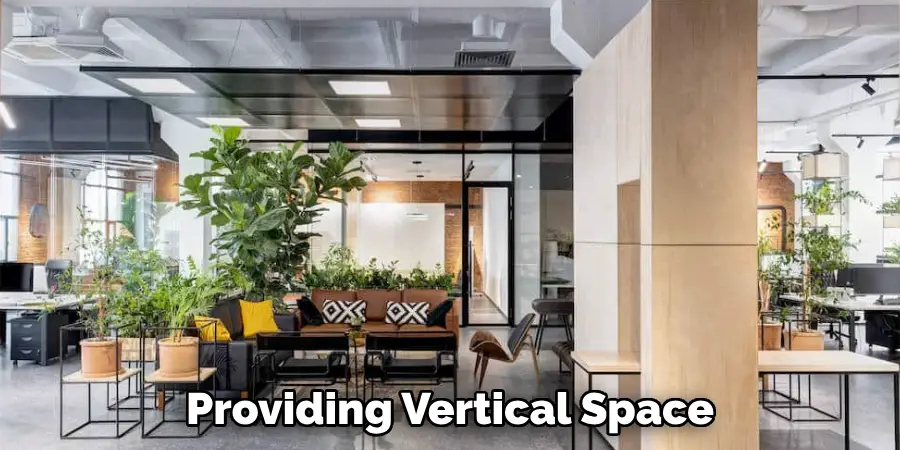
Arbors serve as ornamental gateways, creating a picturesque entry filled with cascading blooms. Walls offer sturdy and expansive platforms for extensive coverage, while pergolas provide both vertical and horizontal growth opportunities, creating shaded walkways.
However, trellises may require more frequent maintenance, and walls may need additional anchoring points. While aesthetically pleasing, arbors and pergolas demand more robust construction to support mature growth.
Installing Supports
Proper installation is vital to ensure the longevity and stability of support structures. Start by selecting weather-resistant materials such as treated wood, metal, or composite materials to withstand the elements. Securely anchor trellises and arbors into the ground or a sturdy base using appropriate fixtures, like concrete footings or heavy-duty brackets, to prevent toppling. Install eye hooks or climbing anchors at intervals to guide bougainvillea growth when using walls.
For pergolas, ensure the structure is reinforced with cross beams and anchored securely. Always consider the mature size and weight of bougainvillea to ensure supports are adequate, avoiding damage or collapse as the plant thrives.
Planting Bougainvillea with Training in Mind
Optimal Planting Location
Selecting the right location for planting bougainvillea is integral to its successful training and overall health. Bougainvillea thrives in full sun, requiring at least six hours of direct sunlight daily to encourage robust growth and prolific flowering.
Choose a planting spot that receives ample sunlight throughout the day, ensuring that your plant will attain the vibrant display it’s known for. Good air circulation is also vital to prevent fungal diseases and pest infestations. Opt for a location with well-draining soil to avoid water-logging, which can lead to root rot and other health issues.
Initial Planting Steps
When planting bougainvillea, preparation is key to fostering strong growth and making training easier. Begin by digging a planting hole that is twice as wide and just as deep as the root ball. Using organic matter, such as compost, can improve soil structure and drainage, promoting root establishment.
Position the plant close to your chosen support structure, such as a trellis or arbor, to facilitate immediate training. This proximity allows for easier attachment of stems and guidance of growth patterns. Backfill the hole with the amended soil, firming it gently around the roots, and water thoroughly to settle the plant.
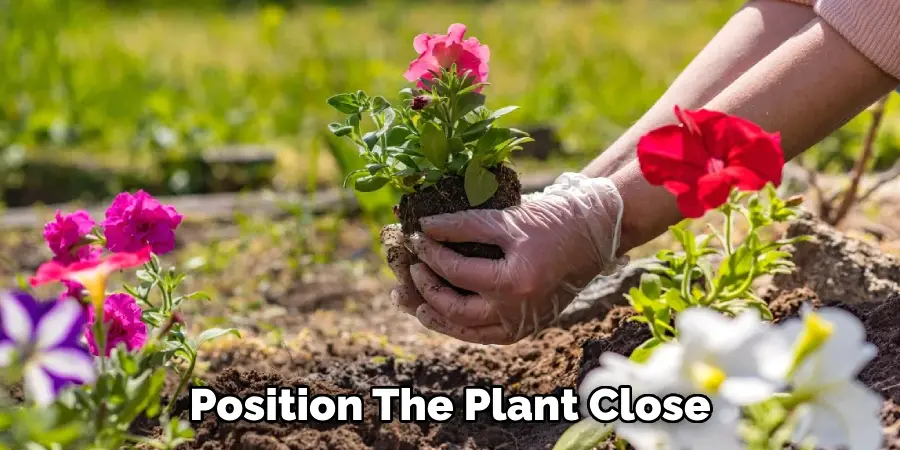
How to Train Bougainvillea: Training Techniques
1.Early Training
Training bougainvillea from a young age is crucial for establishing a strong and manageable structure. Begin by identifying the main stems that will be the plant’s primary support. Gently tie these main stems to the chosen support structure, whether it be a trellis, arbor, or pergola, using soft ties made of materials like fabric or rubber to avoid damaging the stems. As new growth emerges, guide it towards the desired direction by loosely tying it to the supports.
Regular monitoring and gentle handling are essential to ensure the stems are not injured during this process. Early training sets the foundation for a more visually appealing and healthier plant as it matures.
2.Tying and Securing Branches
Properly tying and securing the bougainvillea branches is a key aspect of its training. Soft ties, such as garden twine or flexible plant ties, can be used to attach the branches to the support structure. Ensure the ties are loose enough to allow for growth and movement, avoiding girdling, which can damage or constrict the branches.
As the bougainvillea grows, you must regularly adjust the ties to accommodate the increasing size of the stems and branches. This frequent adjustment prevents the ties from becoming too tight and allows for continued healthy growth. Regularly securing the branches supports the plant’s structural integrity and enhances its aesthetic appeal by creating a well-trained, picturesque display.
3.Pruning for Shape and Structure
Pruning is an essential technique to control the shape and structure of bougainvillea, ensuring it remains healthy and aesthetically pleasing. Begin by removing any weak, dead, or crossing branches that could inhibit the plant’s growth or cause congestion. Focus on reducing excessive growth to encourage a more compact and desirable form.
Timing is crucial; prune bougainvillea after its flowering cycle to promote future blooms and manage its size effectively. Regular pruning helps maintain the plant’s shape and ensures better air circulation, reducing the risk of fungal diseases. By implementing these pruning techniques, gardeners can achieve a well-structured and thriving bougainvillea that enhances the overall beauty of their garden space.
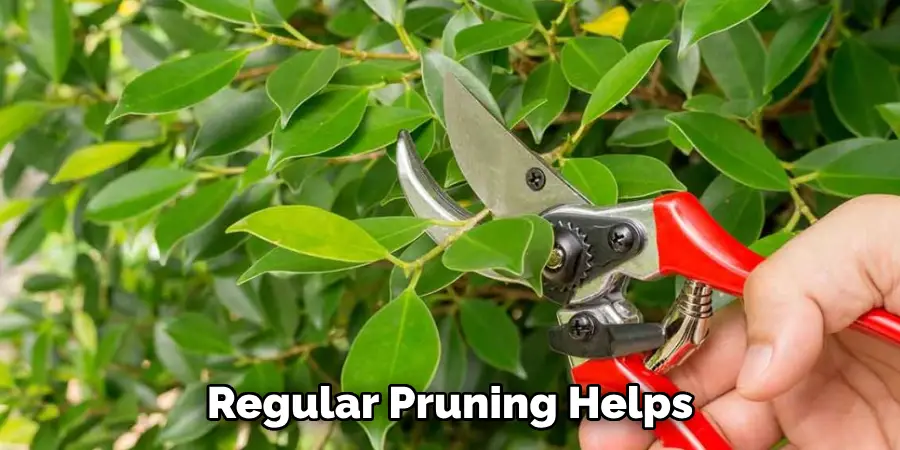
Regular Maintenance and Care
Watering and Fertilizing
It is crucial to its health and vibrancy to establish a consistent watering schedule for bougainvillea. Aim for deep, infrequent watering, allowing the soil to dry out between sessions to prevent root rot. Water thoroughly until the soil is saturated, but avoid water-logging. Introduce a balanced fertilizer regimen designed to support healthy growth and prolific flowering.
A fertilizer with an even nitrogen, phosphorus, and potassium ratio, or one specifically formulated for blooming plants, should be applied monthly during the growing season. Be cautious not to over-fertilize, as this can lead to excessive foliage at the expense of flowers.
Pest and Disease Management
Effective pest and disease management begins with regular monitoring. Common pests such as aphids and spider mites can be identified by their presence on leaves and stems, often causing discoloration and stunted growth.
Fungal infections may present as spots or mildew on foliage. To prevent infestations, employ integrated pest management techniques like introducing beneficial insects and using organic insecticidal soaps. For fungal diseases, ensure good air circulation and avoid overhead watering. If an infection is observed, treat with appropriate fungicides or remove affected parts of the plant immediately. Vigilance and prompt action are key to maintaining a healthy bougainvillea.
Monitoring Growth and Making Adjustments
Regularly inspecting bougainvillea ensures it remains healthy and continues to develop in the desired manner. Look for signs of stress, such as yellowing leaves, wilting, or uneven growth, and address underlying issues promptly.
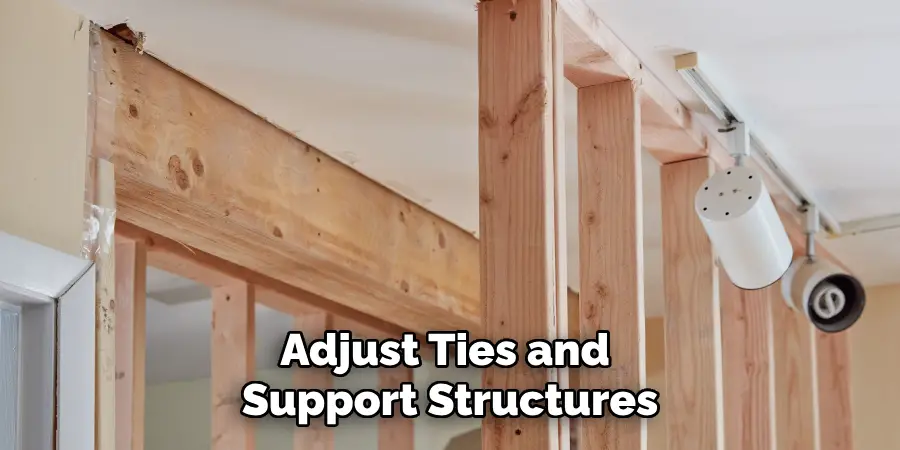
Adjust ties and support structures to accommodate new growth, preventing damage or constriction. Prune any excessive growth or branches that deviate from the intended shape of the plant. By consistently monitoring and adjusting, gardeners can maintain bougainvillea’s health and structure, ensuring a beautiful and thriving plant that enhances their outdoor space.
Troubleshooting Common Issues
Dealing with Overgrowth
Managing overgrowth in bougainvillea involves strategic pruning and redirecting branches. Prune regularly to remove excessive or unruly growth, ensuring the plant maintains its desired shape and structure. Redirect branches by gently tying and training them towards the support structure, preventing them from becoming unmanageable.
Consistent training from a young age helps maintain the plant’s form and prevents it from becoming overly dense. Continuous care and monitoring ensure the bougainvillea remains healthy and aesthetically pleasing.
Addressing Poor Flowering
Poor flowering in bougainvillea can result from insufficient sunlight, over-fertilization, or improper pruning. To encourage blooms, ensure the plant receives ample sunlight, aiming for at least six hours of direct exposure daily.
Avoid over-fertilizing, which may lead to lush foliage at the expense of flowers. Implement proper pruning techniques by trimming after blooming cycles to promote future growth. Adjusting care routines and the pruning schedule ensures the bougainvillea blooms generously, enhancing the beauty of your garden.
Winter Care and Protection
Protecting Bougainvillea in Colder Climates
Bougainvillea is sensitive to frost and cold weather, so protecting it during winter is crucial in colder climates. Mulching around the base of the plant with organic material such as straw, wood chips, or compost can help insulate the roots from freezing temperatures.
Covering the plant with frost blankets or burlap can shield it from harsh winter weather. Ensure the covers are secure but allow for some airflow to prevent condensation buildup, which can lead to rot.

Tips for Overwintering Potted Bougainvillea Indoors
Moving potted bougainvillea indoors during winter is an effective way to protect them from frost. Place the pots in a bright, sunny location with temperatures between 50-60°F (10-15°C). Water sparingly as the plant’s growth slows, reducing its moisture needs.
Avoid overwatering to prevent root rot. Consider using grow lights to provide adequate light if indoor lighting is insufficient. With proper care, your bougainvillea can survive winter indoors and flourish again when warmer weather returns.
Conclusion
Recapping the key steps for successfully training bougainvillea, it is essential to master strategic pruning, proper watering, and balanced fertilization. Monitoring for pests and diseases ensures the plant remains healthy while consistent adjustments to ties and supports guide its growth. Regular care and vigilance are critical in achieving a well-structured and thriving bougainvillea.
Embracing these practices maintains the plant’s health and enhances its aesthetic appeal. By understanding how to train bougainvillea effectively, gardeners can fully enjoy the beauty and benefits of this vibrant plant in their outdoor spaces.
About
Outdoor Fixes is a distinguished figure in the world of Diy design, with a decade of expertise creating innovative and sustainable Diy solutions.
His professional focus lies in merging traditional craftsmanship with modern manufacturing techniques,
fostering designs that are both practical and environmentally conscious. As the author of diy,
outdoorfixes delves into the art and science of outdoorfixes-making, inspiring artisans and industry professionals alike.
Education RMIT University
(Melbourne, Australia) Associate Degree in Design (Outdoor Fixes) Focus on sustainable design, industry-driven projects,
and practical craftsmanship. Gained hands-on experience with traditional and digital manufacturing tools, such as CAD and CNC software.
Nottingham Trent University
(United Kingdom) Bachelor’s in outdoorfixes.com and Product Design (Honors) Specialized in product design with a focus on blending creativity with production
techniques. Participated in industry projects, working with companies like John Lewis and Vitsoe to gain real-world insights.
Publications and Impact
In diy, Outdoor Fixes his insights on indoor design processes, materials, and strategies for efficient production.
His writing bridges the gap between artisan knowledge and modern industry needs, making it a must-read for both budding designers and seasoned professionals.

